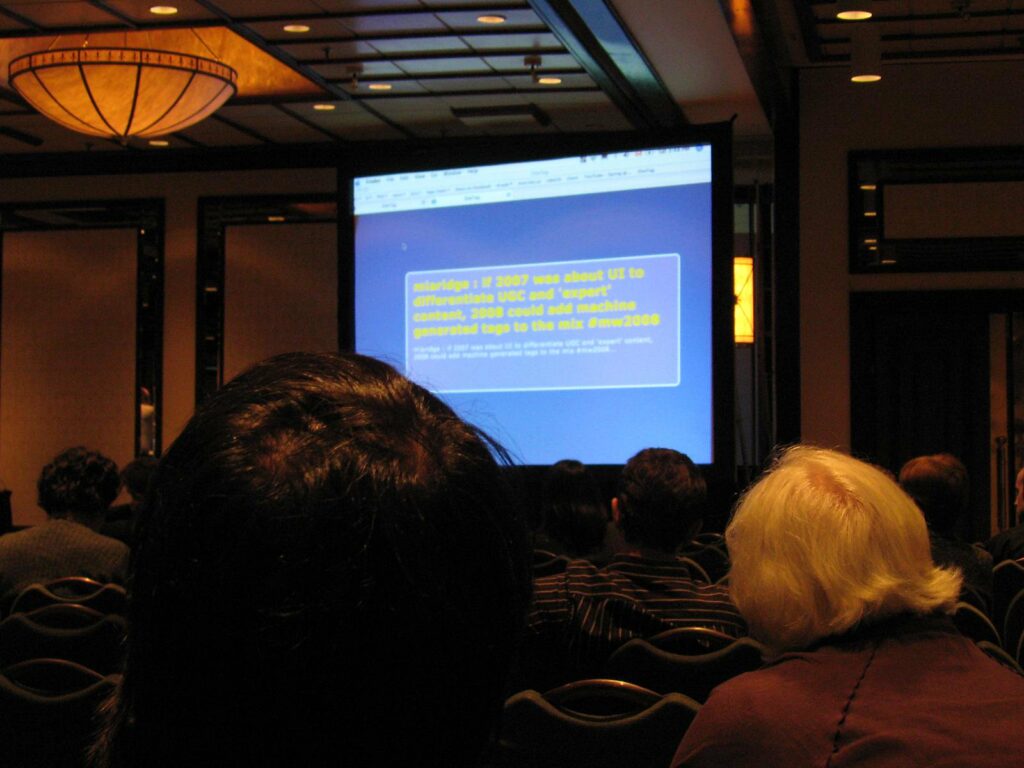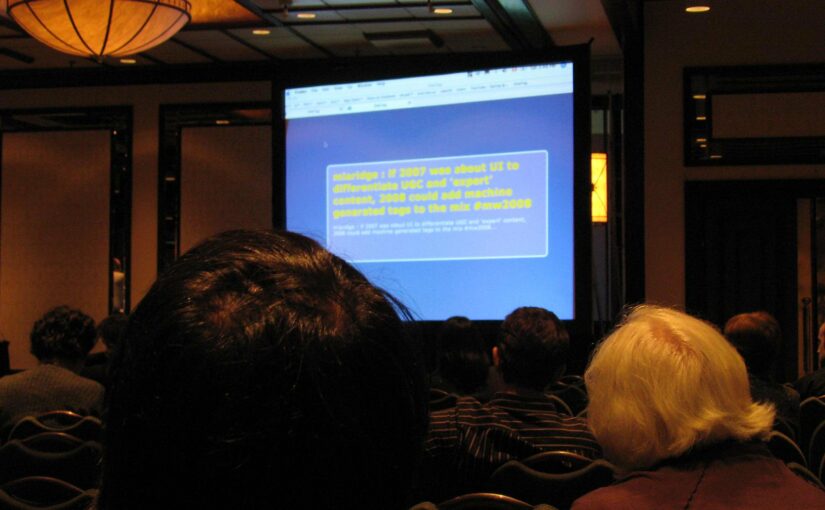There's a thread on the Museums and the Web conference site asking for suggestions for MW2009. I was a bit zombie-like by the time I filled out the feedback form, so I'd added some more comments.
I'm posting them here because I think they apply to lots of conferences and these are things I'd like to see generally. It might look like a lot of comments but I'm probably inspired to write because overall the conference was so good.
There were suggestions to have Pecha Kucha style sessions for people to talk about their projects. I think that'd be really useful – people in the early stages of a project could get a range of feedback and suggestions from some of the best researchers and most experienced 'doers' around; and the vast majority of projects that will never be written up as big conference papers can still pass on a few valuable lessons in a few minutes. It'd also help build a pool of people who had some experience presenting.
I also suggested having afternoon versions of the Birds of a Feather breakfasts. I'm one of those people who's not at all sociable in the morning, but an afternoon session in a coffee shop or pub would be perfect. It'd also give you a way to meet people and maybe go on to dinner or drinks – it must be really difficult if you don't know anyone there and are a bit shy. I'd imagine you could find people who are interested in the same topics more easily this way because it offers a bit more structure than just drinks.
I don't know if there are any guidelines when writing papers but I'd like to suggest one – it's really useful when people talk about how their projects worked in their institutions/sector, as it helps everyone work out how to champion and implement similar ideas when they get back from the conference. Or maybe that's a thread for one of the museum geeks lists…
It would be really useful if each session listed the audience (managers, technologists, educators, etc) and the level of experience it was aimed at (e.g. absolute beginners, practitioners, people looking for a practical learning session) in the program. A lot of the papers did a really good job covering a range of potential audiences, but I might have skipped other sessions if I'd realised they were aimed at an introductory level.
Museums and the Web conferences are brilliant because they put the papers online, so this is a minor quibble, but it would be handy if the papers were available as pdf (or similar) downloads so I could load them onto my phone or laptop beforehand. That way I could follow them during the presentations if there isn't any network connectivity, or review them afterwards.
Finally, it would be so helpful if all presenters had to put their slides online somewhere, tagged with the conference tag and linked from the conference site. The one paper I've blogged about so far had their slides online, and it helped me immensely when writing up as I could check my notes against theirs. As more people blog about conferences, you might need tags for each session – a bit more overhead, but I'm sure you'd get great conversations between people who blogged about the same sessions and hopefully with presenters too.

